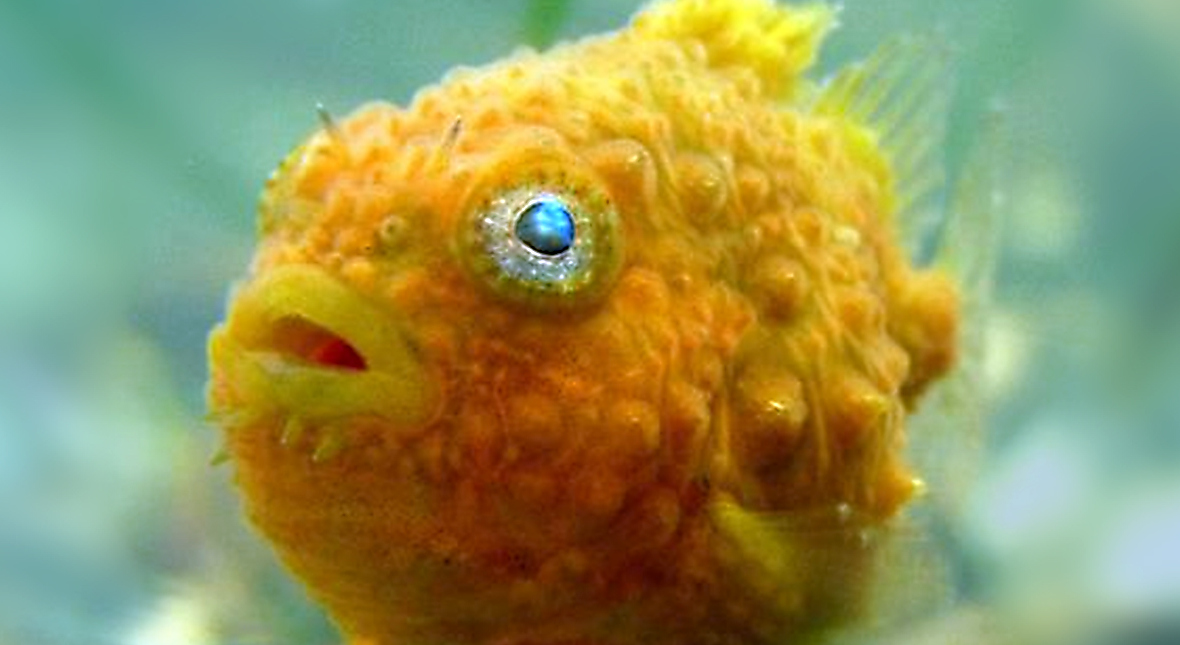Now Reading: Uniquely Adapted Creatures of the North Pacific: The Pacific Spiny Lumpsucker
-
01
Uniquely Adapted Creatures of the North Pacific: The Pacific Spiny Lumpsucker
Uniquely Adapted Creatures of the North Pacific: The Pacific Spiny Lumpsucker

In the cold, nutrient-rich waters of the North Pacific, evolution has given rise to a cast of marine oddities perfectly suited for life on the edge. Among them, few are as charming—or as bizarre—as the Pacific Spiny Lumpsucker (Eumicrotremus orbis).
A Sphere of Survival
At first glance, the Pacific Spiny Lumpsucker looks more like a child’s bath toy than a fish. Its body is nearly spherical, rarely exceeding 2.5 inches (6 cm) in length. It waddles rather than swims, using its tiny fins in a comical flutter. But beneath its quirky appearance lies a set of remarkable adaptations that make it a true specialist in its harsh coastal environment.
Built-in Suction Power
Perhaps its most notable feature is a modified pelvic fin that has evolved into a powerful suction disc. This adaptation allows the lumpsucker to anchor itself to rocks, kelp, or discarded shells—essential in the surge-prone shallows where it often lives. In an environment where waves and currents are constantly churning, the ability to cling instead of swim is a life-saving innovation.
Unlike more mobile fish, the lumpsucker doesn’t try to fight the current—it simply hangs on and waits. This strategy conserves energy and reduces its exposure to predators. The fish will often stay motionless for long periods, almost becoming part of the seascape.
Camouflage in Miniature Armor
Its skin is covered in knobby, spiny tubercles—not scales—which give it a rough texture and help it blend into the sea floor, kelp beds, or barnacle-encrusted rocks. These natural bumps break up its silhouette, making it harder for predators like sculpins or seabirds to spot.
Coloration varies depending on habitat and life stage, ranging from olive green and mottled brown to pink or even reddish hues—an additional camouflage bonus.
A Passive Predator
The Pacific Spiny Lumpsucker is not a fast hunter. Instead, it relies on its stillness and camouflage to ambush small prey like copepods, amphipods, and other tiny crustaceans. Its round mouth can create a quick suction force to draw in food, acting more like a tiny vacuum than a conventional predator.
Dedicated Dads
Lumpsucker reproduction is another area where this fish shows a unique behavioral twist. After the female lays her eggs in a secure crevice or on a rock, the male guards them fiercely, using his suction disc to remain attached nearby. He fans the eggs with his fins to keep them aerated and deters any would-be predators until the larvae hatch—a surprisingly devoted role in the fish world.
Scientific and Cultural Significance
Study of biomechanics: Researchers are interested in the suction disc for its remarkable sticking power, which could inspire underwater robotics and medical adhesives.
Public fascination: Their cute appearance and unusual movement patterns make them popular in public aquariums.
Climate change indicators: Because of their limited mobility and reliance on specific habitats, lumpsuckers are vulnerable to warming waters and habitat degradation—making them potential bioindicators for environmental monitoring.
Fun Fact Corner
Despite their slow pace and awkward shape, they are excellent at staying put in raging surf—thanks to the physics of their suction disc and low center of gravity.
Some individuals have been observed clinging to crab shells or discarded bottles, demonstrating opportunistic behavior in cluttered seafloors.





























